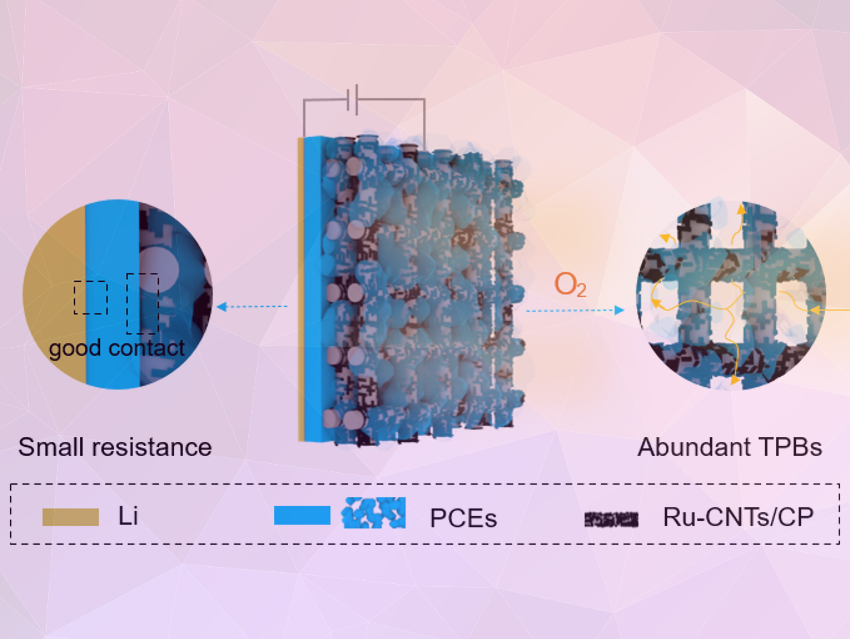All-solid-state lithium-oxygen batteries (ASS Li-O2 batteries) are a promising alternative to conventional lithium-ion batteries because of their high theoretical energy densities and safety. However, the realization of high-performance ASS Li-O2 batteries is hampered by limited triple phase boundaries (TPBs) in the solid-state cathodes (SSCs) and the high resistance imposed by solid electrolytes. ASS Li‐O2 batteries need a large number of TPBs, which serve as active sites and facilitate the necessary electrochemical reactions.
To tackle these problems, Xin-Bo Zhang, Changchun Institute of Applied Chemistry, China, and colleagues have developed a plastic crystal electrolyte (PCE, pictured above) with adjustable porosity. A plastic crystal is a soft crystal composed of weakly interacting molecules. The PCE is prepared in dimethyl sulfoxide (DMSO) from succinonitrile, lithium bis(trifluoromethanesulfonyl)imide, poly(vinylidene fluoride-hexafluoropropylene), and 2,6-di-tert-butyl-4-methylphenol. A thermally induced phase separation (TIPS) technique is used to form the PCE. The solvent concentration influences the resulting porosity.
An ASS Li-O2 battery containing the PCE offers many TPBs and a resistance of only 115 Ω. This is the lowest value reported in this field to date. The battery’s performance is improved accordingly, with a high specific capacity of 5963 mAh g–1, good rate capability, and stable cycling life up to 130 cycles at 32 °C.
- A Porosity-Adjustable Plastic Crystal Electrolyte Enabled High-Performance All-Solid-State Lithium-Oxygen Batteries,
Xinbo Zhang,
Angew. Chem. Int. Ed. 2020.
https://doi.org/10.1002/anie.202002309



